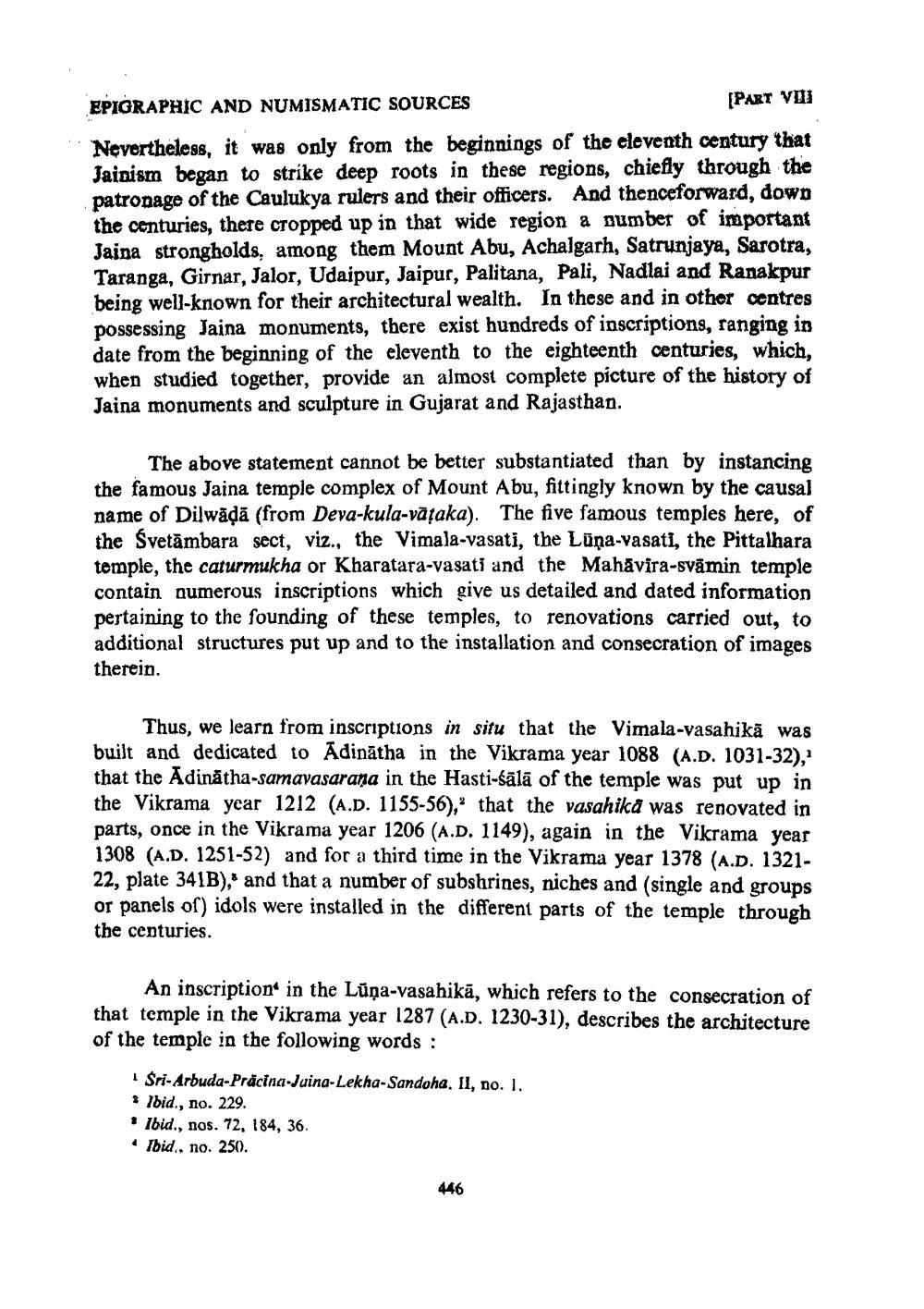________________
EPIGRAPHIC AND NUMISMATIC SOURCES
(PART VI
Nevertheless, it was only from the beginnings of the eleventh century that Jainism began to strike deep roots in these regions, chiefly through the patronage of the Caulukya rulers and their officers. And thenceforward, down the centuries, there cropped up in that wide region a bumber of important Jaina strongholds, among them Mount Abu, Achalgarh, Satrunjaya, Sarotra, Taranga, Girnar, Jalor, Udaipur, Jaipur, Palitana, Pali, Nadlai and Ranakpur being well-known for their architectural wealth. In these and in other centres possessing Jaina monuments, there exist hundreds of inscriptions, ranging in date from the beginning of the eleventh to the eighteenth centuries, which, when studied together, provide an almost complete picture of the history of Jaina monuments and sculpture in Gujarat and Rajasthan.
The above statement cannot be better substantiated than by instancing the famous Jaina temple complex of Mount Abu, fittingly known by the causal name of Dilwādā (from Deva-kula-vățaka). The five famous temples here, of the Svetāmbara sect, viz., the Vimala-vasati, the Lūna-Vasati, the Pittalhara temple, the caturmukha or Kharatara-vasati and the Mahavira-svāmin temple contain numerous inscriptions which give us detailed and dated information pertaining to the founding of these temples, to renovations carried out, to additional structures put up and to the installation and consecration of images therein.
Thus, we learn from inscriptions in situ that the Vimala-vasahikā was built and dedicated to Adinātha in the Vikrama year 1088 (A.D. 1031-32), that the Adinātha-samavasarana in the Hasti-śālā of the temple was put up in the Vikrama year 1212 (A.D. 1155-56), that the vasahika was renovated in parts, once in the Vikrama year 1206 (A.D. 1149), again in the Vikrama year 1308 (A.D. 1251-52) and for a third time in the Vikrama year 1378 (A.D. 132122, plate 341B), and that a number of subshrines, niches and single and groups or panels of) idols were installed in the different parts of the temple through the centuries.
An inscription in the Lūņa-vasahikā, which refers to the consecration of that temple in the Vikrama year 1287 (A.D. 1230-31), describes the architecture of the temple in the following words:
Sri-Arbuda-Präcina-Jaina-Lekha-Sandoha. II, no. I. * Ibid., no. 229. • Ibid., nos. 72, 184, 36. • Ibid., no. 250.
446




